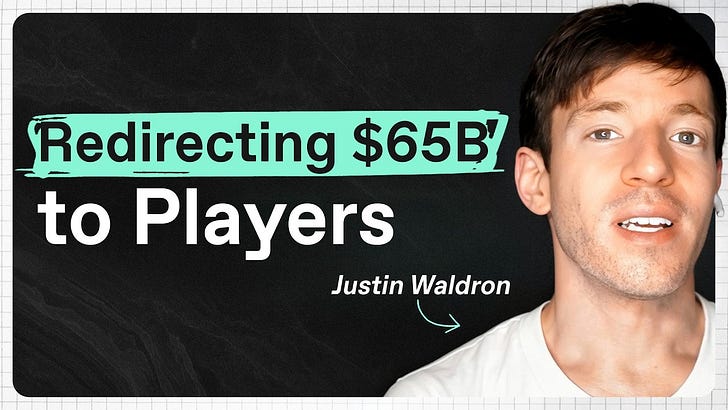Hello!
In the previous episode, we talked about how gaming models have evolved and where blockchain rails can help in redirecting ad resources to players. In this episode, we talk about why transparency has always been blockchain’s bug, not its feature, and how Canton Network is building privacy-preserving infrastructure for institutional capital markets.
Eric Saraniecki joined me from Canton Network for our latest podcast. We have been tracking the blurring of lines between TradFi and crypto-native business models over the past few quarters here at DCo. Canton sits at the heart of this transition. It is a network that seeks to build what traditional institutions need to come fully on-chain.
Eric is a cofounder and head of network strategy at Digital Asset and is building Canton Network. They have raised a strategic round of $135 million led by DRW Venture Capital and Tradeweb. DRW is also in talks to raise an additional $500 million for Canton’s token treasury. Eric is also a co-founder of Cumberland, DRW’s trading arm and one of the largest liquid trading desks in crypto. In other words, he has both the experience and the capital needed to bring institutions on-chain.
Four things specifically stood out to me from the conversation.
Privacy is a spectrum, not black or white. Crypto is about more efficient infrastructure rails. However, that does not mean real-world finance should have to trade privacy for quick settlements. One can debate the complex trade-offs of decentralisation, speed, and privacy to no end. Still, the market is telling us that it has started valuing privacy as it remains the only sector with double-digit returns over the past few weeks. Debates aside, it makes sense to pay attention to those signals.
Stablecoins have not really found PMF. BCG reported recently that only 8% of the total stablecoin settlements in 2024 were for real-world use cases like RWAs and payments. However, the integration with the world outside crypto has been underway with the likes of Stripe and Circle tweaking the plumbing to fit those use cases. I think that this number will only increase in the not so distant future.
Ethereum’s incentive model is extractive. Ethereum inherited Bitcoin’s approach of rewarding only infrastructure providers but found product-market fit in the application layer. Aave creates tremendous value but earns no protocol rewards for it. Canton, like Sonic, aims to change that by allocating 50% of rewards to applications, rather than validators.
Darkpools are the next iteration of on-chain DeFi. For power users considering where Canton fits, Eric’s answer is managing inventory, collateral, and risk while preserving privacy. Knowing everyone’s positions in perp DEXs is dangerous. The fix isn’t better transparency, it’s proper opacity.
Canton is an attempt to give large institutions a set of rails that they feel familiar with. Institutions were never keen on using blockchains, as they were apprehensive of the benefits of integrating new infrastructure. Can that change? Sure, but only if the underlying infrastructure has evolved. Large traditional institutions will conduct business on-chain if it makes them more money. In theory, it’s possible, and it will take time before we see this in practice.
Signing off,
Saurabh Deshpande










